Family : Sicariidae

Text © Prof. Santi Longo

English translation by Mario Beltramini
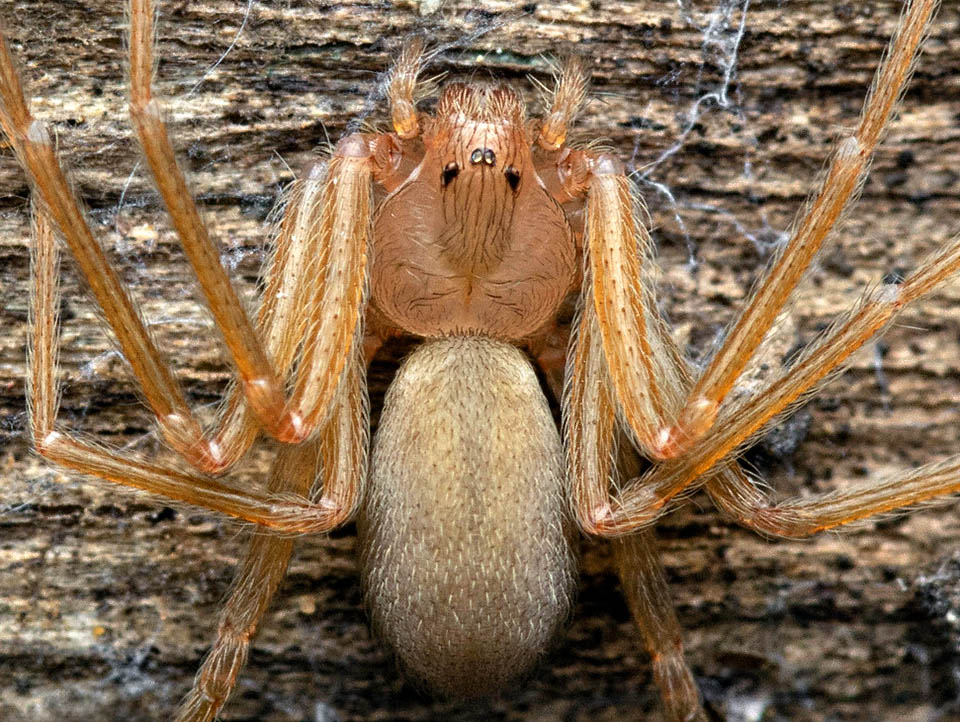
Of African origin but now cosmopolite of the temperate zones, Violin spider gets the name from the characteristic dorsal dark violin-shaped spot © Álvaro Alemany
The Araneid Arachnid (Loxosceles rufescens Dufour, 1820), known as Violin spider, belongs to the family Sicariidae that includes species having a brown or brown-yellowish body, equipped with three pairs of eyes.
The name of this family comes from the Latin “sicarium”, hitman, assassin, term with which the old Romans indicated the Zealot terrorists who killed for terrorism or on commission, using a short curved sword called “sica”, with reference to the poisonous stings the Sicariids inflict on the body of the preys to kill them.
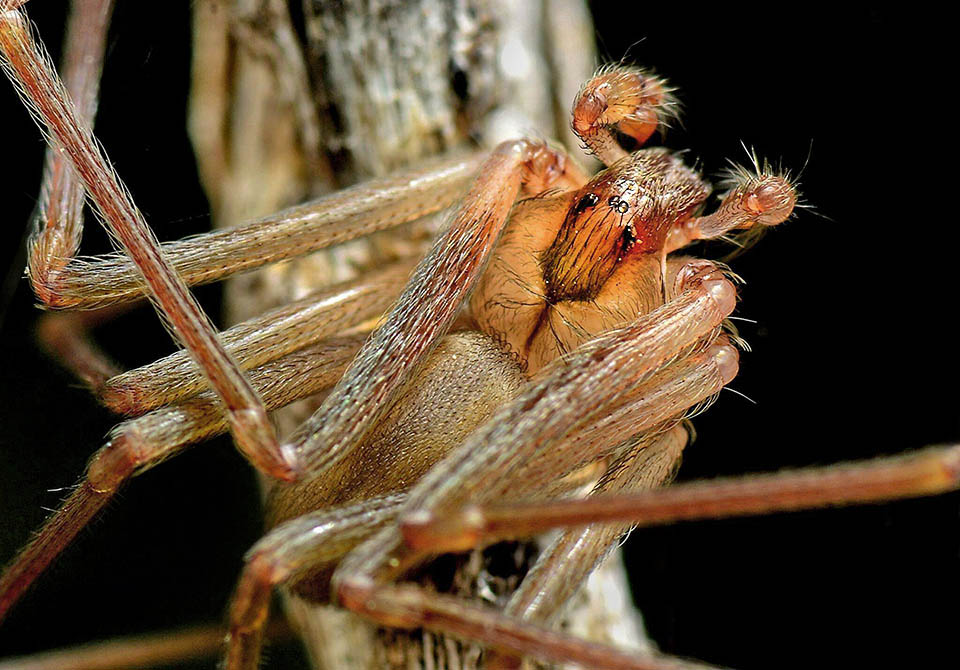
Here the spot is more evident and in prosoma you can also see 3 pairs of eyes, *two long pedipalps with claw and the short chelicerae with terminal claw to inoculate venom © Mark Newton
A lethal component is the sphingomyelinase D that causes the stung tissues to necrotize.
The more than 160 species of Sicariids are subdivided into three genera Hexoophtalma Karsch, 1879,
Sicarius, Walckenaer, 1847 and Loxosceles, Heineken and Lowe, 1832.
The genus, which includes more than 100 species, is present in North America with the extremely poisonous Loxosceles reclusa Gertsch & Mulaik.
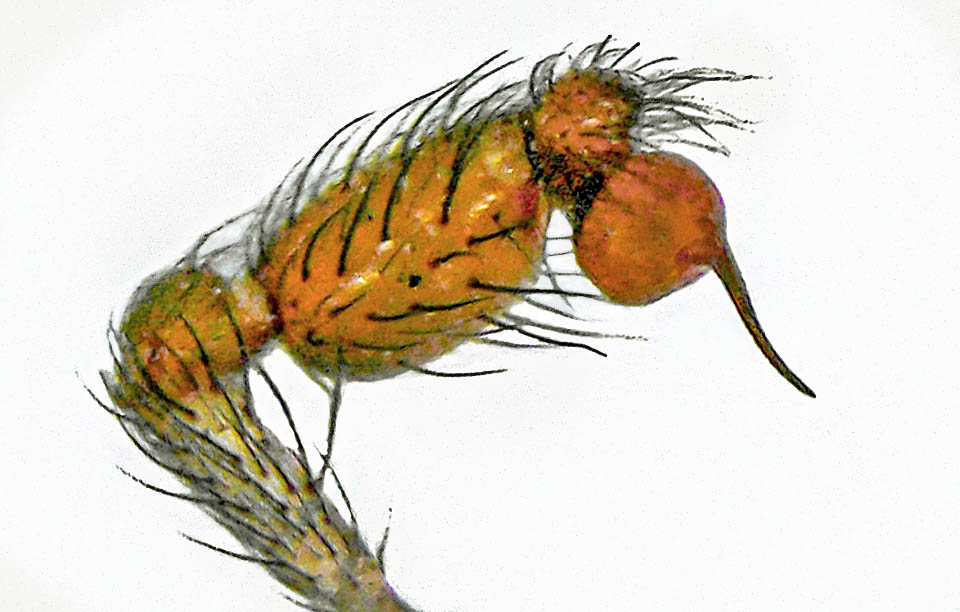
Here enlarged with the reserve of poison that immobilizes the victim starting the digestion of small preys such as ants, springtails, cockroaches, flies and silverfishes © Priyantha Wijesinghe
The specific name rufescens refers to the colour of the body.
Zoogeography
Loxosceles rufescens is believed to be of African origin, but since remote times is present in the Nations of the Mediterranean Basin, and is presently considered cosmopolitan in the temperate zones, due to passive transportation with trade exchanges.
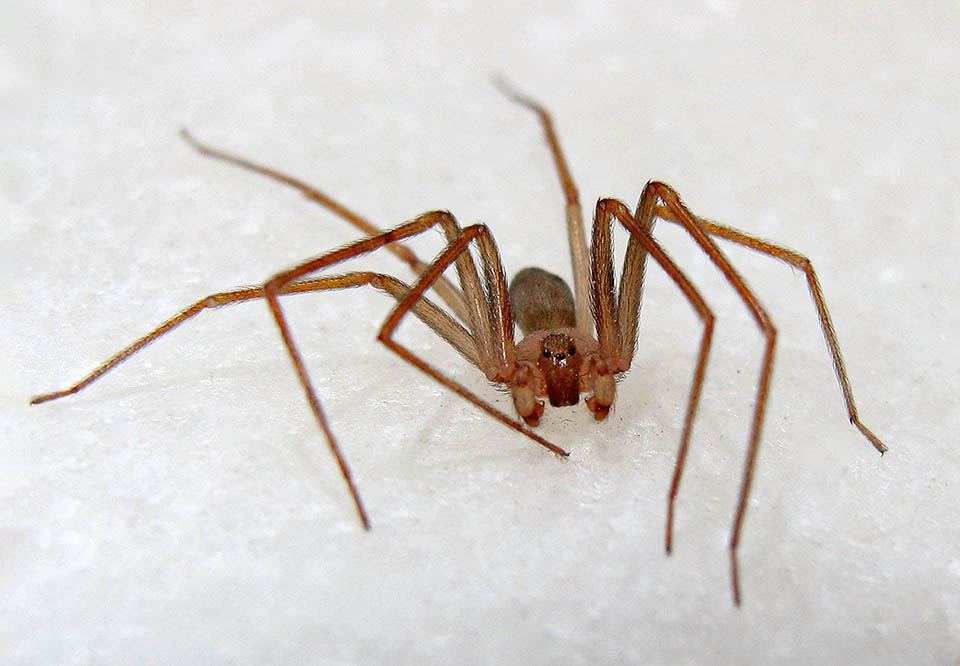
A male: the body measures about 7 mm but with its long legs reaches 5-6 cm © emilio2020
It is diffused in North Africa, in France in the Iberian and Balkan peninsulas , and has been introduced in the USA and in Asia.
In Italy, where its presence is reported for over a hundred years, is held responsible for some cases of human mortality, resulting from its bites, on which however does not exist an accurate scientific documentation.
Ecology-Habitat
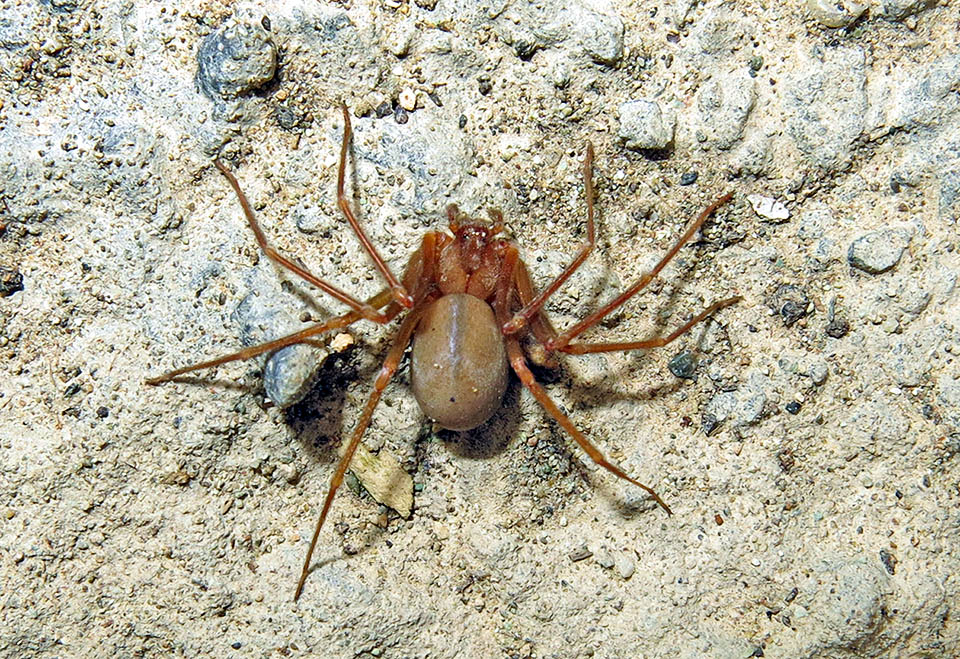
The females’, greater, body measures 9-10 mm, and in both sexes the colour, more or less clear, has reddish shades as the specific names states © Alireza Zamani
Loxosceles rufescens survives in environments where the temperatures stand between 8 and 43 °C; and is able to survive long periods of drought without feeding.
In the warm temperate zones the Violin spider lives outside, in the tunnels, in the crevices of the trees, under stones and in various shelters, from where it gets out during the night, to catch ants, springtails and other species of cryptozoans living on the ground. In the coldest zones it takes refuge in buildings, especially if heated, with a preference for cellars, attics, and little frequented environments.
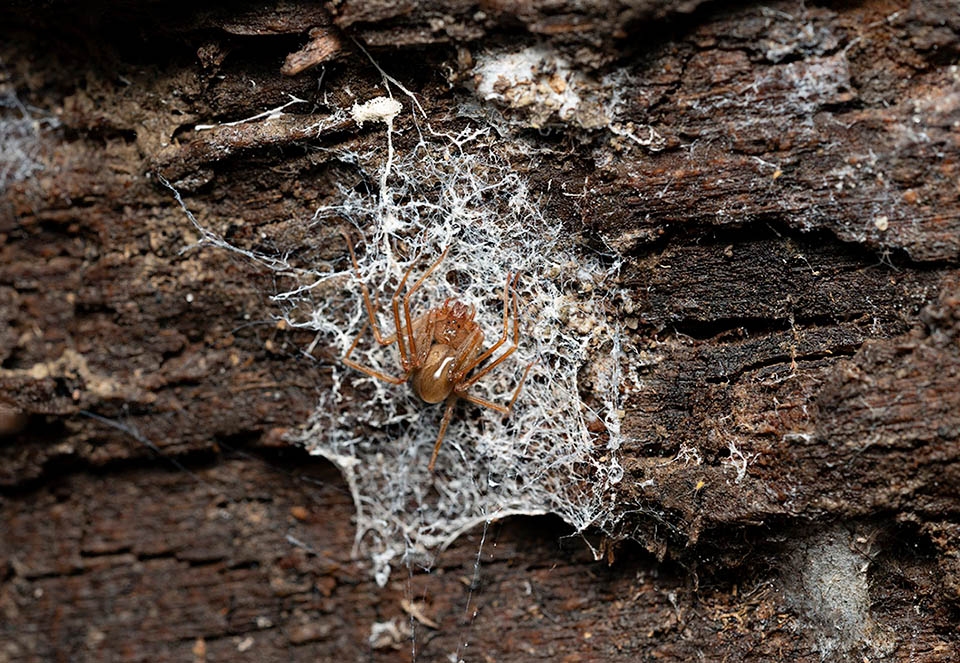
They are spiders hunting the prey without need of cobwebs, but in the underground shelter females prepare a bed of silky threads for the newborns © Eleftherios Katsillis
The most common preys of Loxosceles rufescens are: ants, cockroaches, flies, silverfishes and other small synanthropic animals that, normally, seizes directly without the help of the spider web.
The female weaves in the nest a bed scattering silvery threads.
It has nocturnal habits and is not aggressive towards humans preferring to flee if it senses danger. In the homes, in the cellars, in the closets and in the attics and in the cracks, it often penetrates cupboards, drawers and skirting boards.
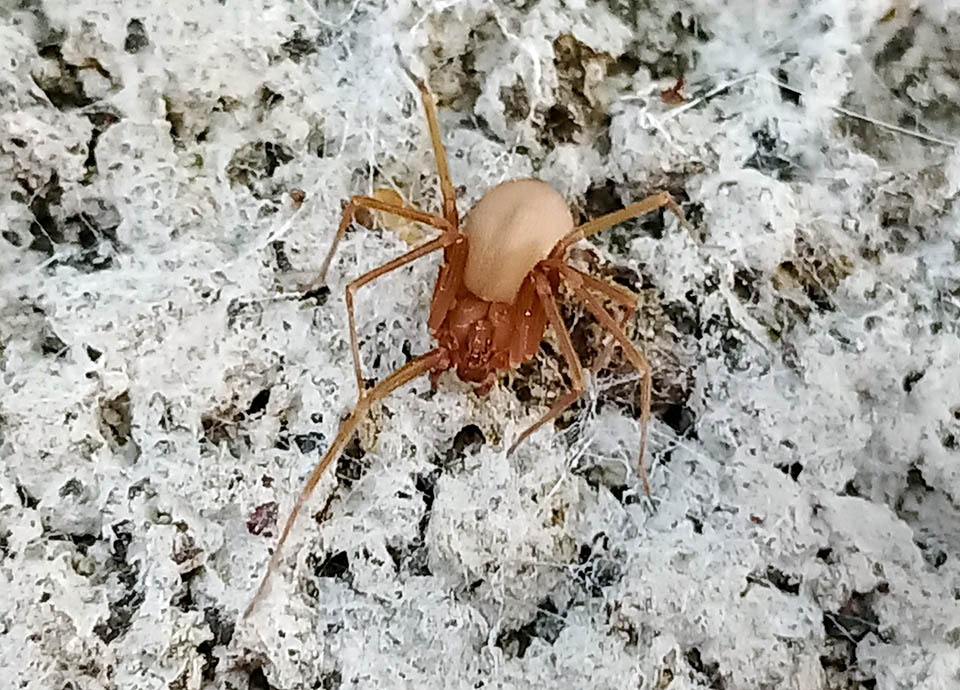
This one has just finished its patient weaver work and now waits for a male who doesn’t keep her waiting © Lkuyumcu
From such shelters it moves on the curtain fabrics and articles of clothing left on the ground, or inside the shoes. Only if trampled or compressed, even if unintentionally, the feds by stinging and often injecting venom too.
Morphophysiology
The body, of inconspicuous yellowish brown colour, measures about 7 mm in the males and 9 to 10 mm in the females, reaching 5-6 cm legs included.
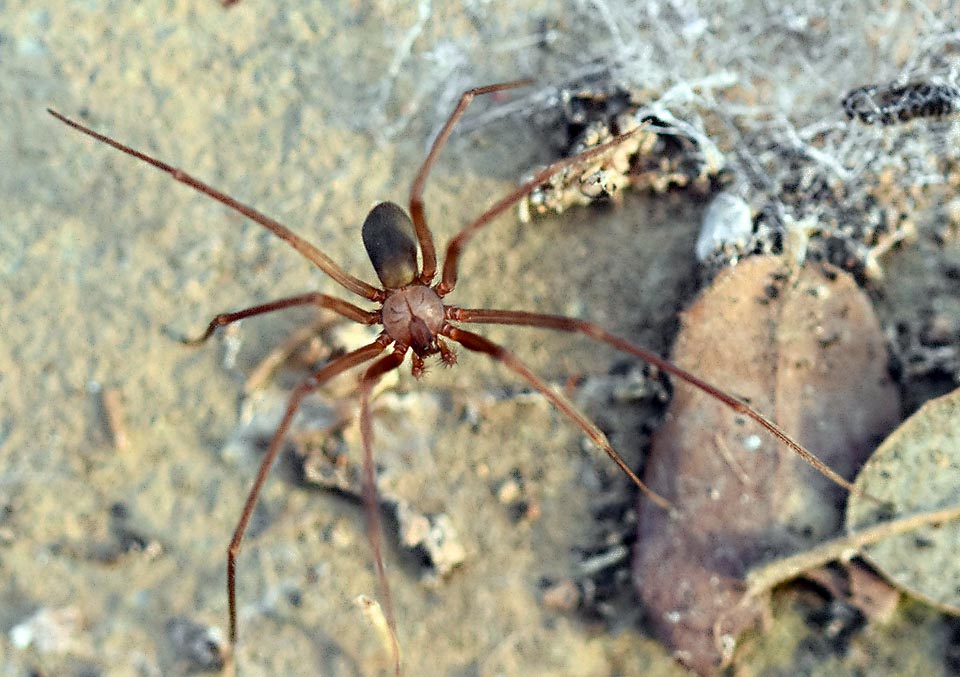
Here it is, performing characteristic movements on the threads placed in front of the shelter of the partner so as not to be mistaken for a prey © Axel Gosseries
The front segment of the body, or prosoma, is flat and, besides the six eyes, displays the chelicerae equipped with weak “claws”, whose terminal talon, 0,6-0,8 mm long, called claw, injects the venom after the sting. This secretion immobilizes the victim and starts the digestion of the internal tissues, who then will be ingested by the predator.
In the dorsal part is present a characteristic dark spot, quite similar to the shape of a violin. The four pairs of legs arranged laterally, are very long and flattened.
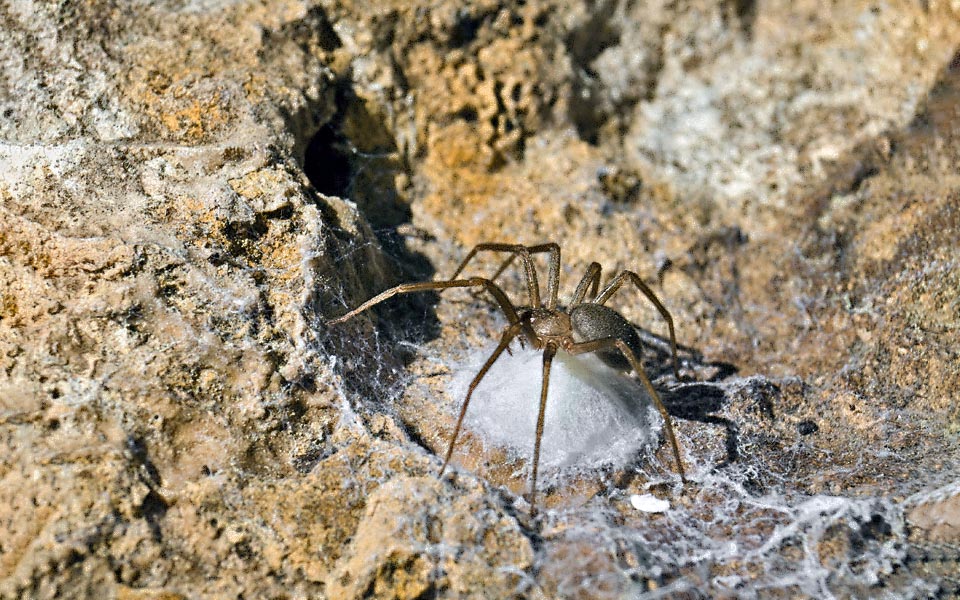
After mating the female lays the eggs in an ovigerous sac she surveys, as usual in the spiders’ world until the hatching © Sergiu Andreev
In the abdominal region of the body, or opisthosoma, narrower than the prosoma, come out the spinnerets connected with the serigen glands; just above the spinnerets stands the anal opening and just below the genital one.
Ethology-Reproductive Biology
Loxosceles rufescens has crepuscular or nocturnal habits and is shy, not aggressive, preferring escape to aggression. The bite is painless and the symptoms do appear only after some hours.
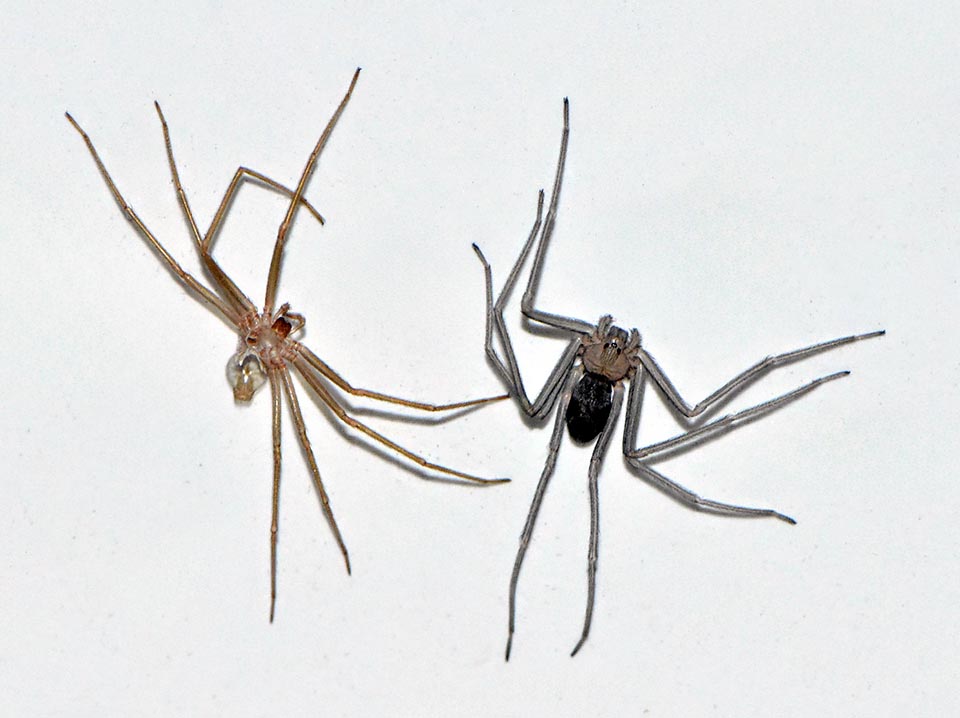
The children, similar to parents do, growing, many moults. Here, right, a newly formed male and, left, the exuvia of the previous age © Lies Van Rompaey
Matings begin in summer; the males, during the night, leave their shelter looking for the females shelters and, to avoid being killed and eaten, perform characteristic movements on the silk threads placed in front of the partner’s shelter. After a short courting the fast mating takes place.
The fecundated female of Loxosceles rufescens builds in the nest a small ovigerous sac resembling a whitish cocoon where, after one week, lays 20 to 50 eggs that hatch in about one week; the newborns similar to the adults, keep close to the materna web until the second moult is completed.
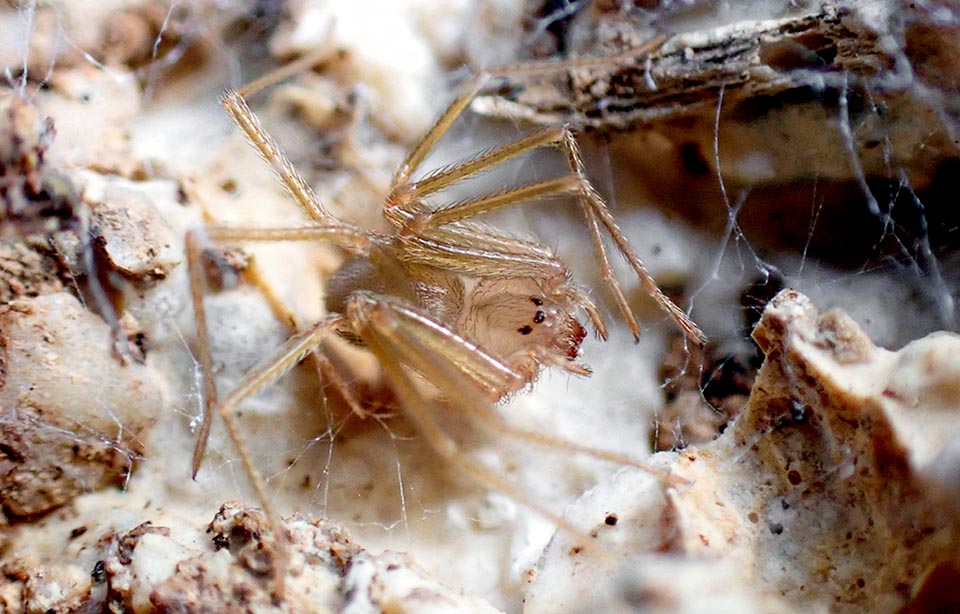
This has just completed the moult and the integument is not yet coloured © Julien Tchilinguirian
During the following 6-7 months they perform 5-6 moults more before getting adults who live on average 2-4 years; however, in optimal laboratory conditions, the adults may live even 10 years.
Only the adults may bite the humans but they do not cause any immediate pain, so, often, it is the symptoms to make understand if with the bite has been injected the cytotoxic poison that has a necrotic action on the cells of the tissues around the wound. The inoculated cytotoxin can start the so-called erythematous or necrotic loxoscelism, with formation of ulcers that may extend for a few centimetres and that, with appropriate medical treatment, tend to heal after many weeks.
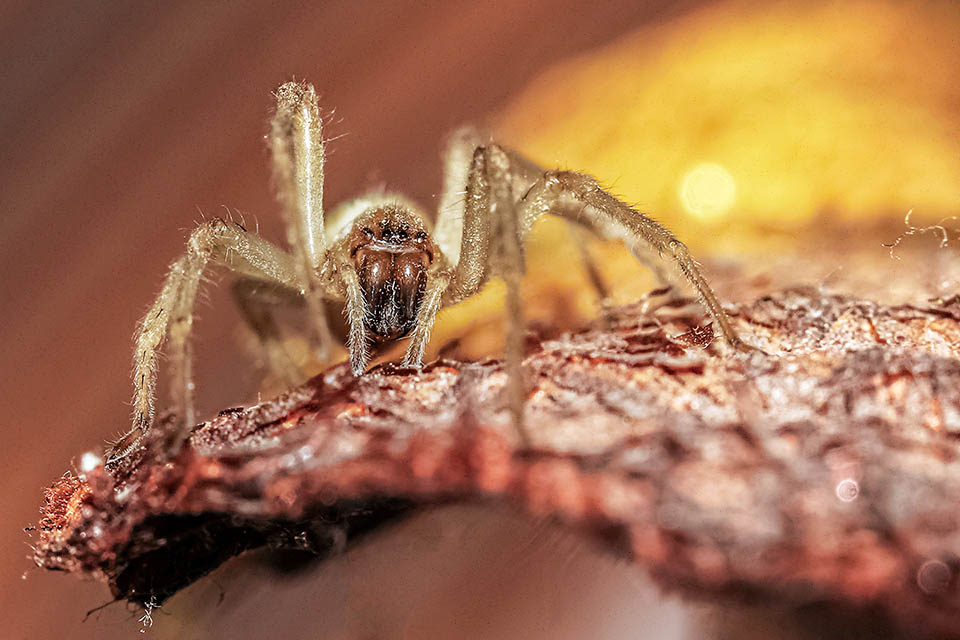
Violin spider stings are painless for man but can spread anaerobic bacteria and cause, with the toxin, ulcers, fever, haemorrhages, muscle and kidney damages © Rafi Amar
Along with the sting Loxosceles rufescens can spread anaerobic bacteria that cause the lysis of the tissues. In the most serious cases, fortunately very rare, may follow, high fever, ecchymosis, haemorrhages, muscle and kidney damages.
Synonyms
Loxosceles compactilis Simon, 1881; Loxosceles distincta (Lucas, 1846); Loxosceles indrabelbes Tikader,1963; Loxosceles marylandica Muma, 1944.
